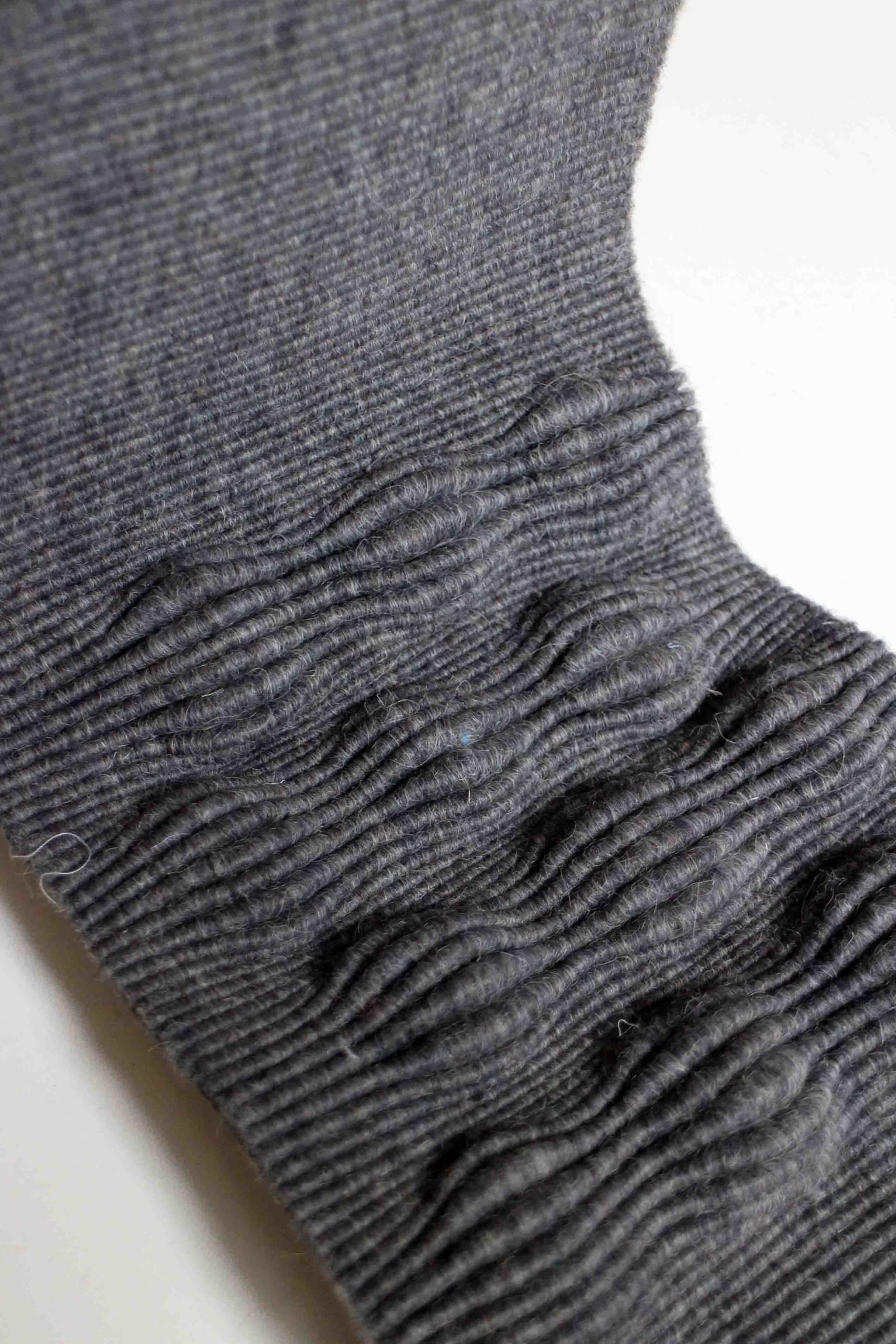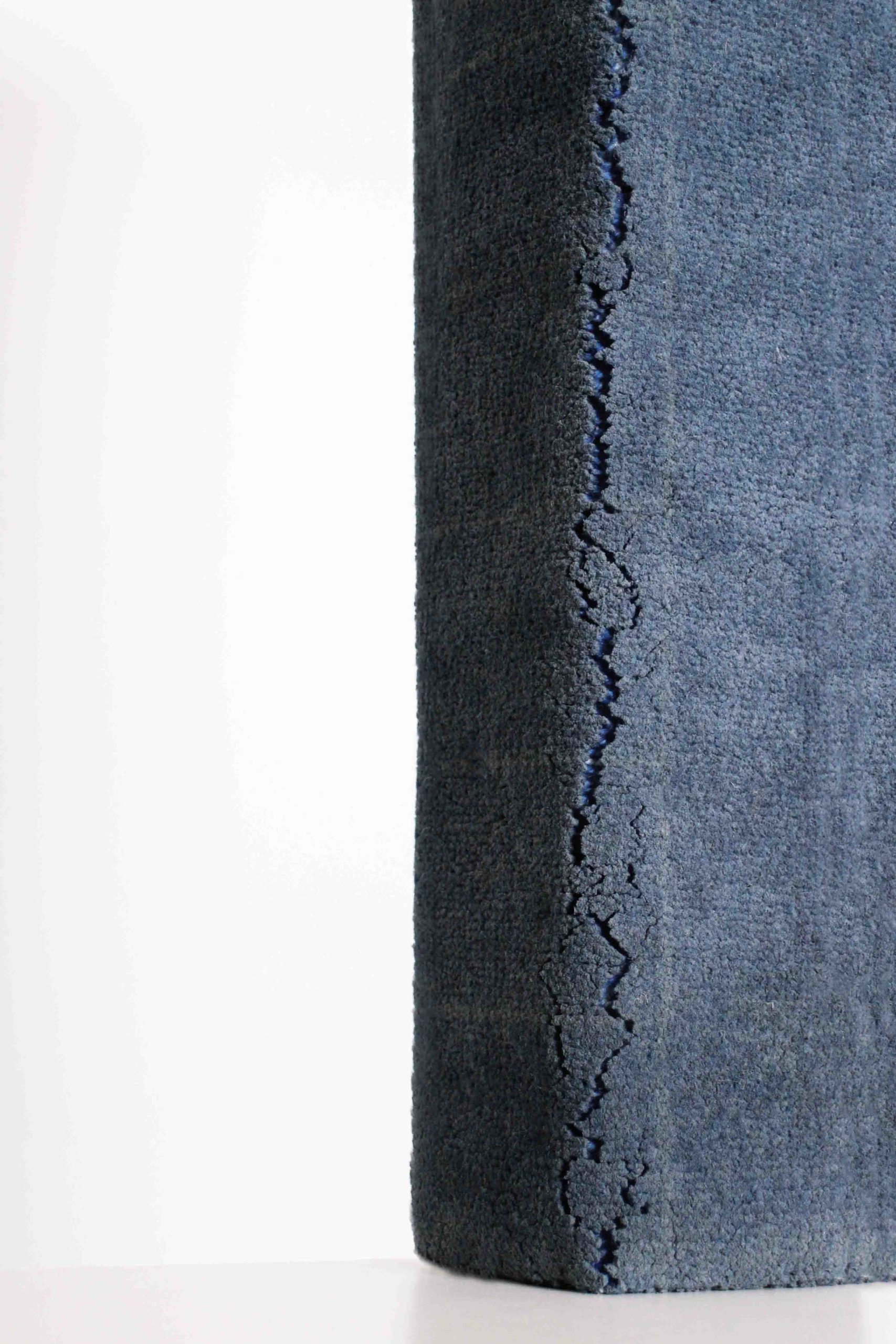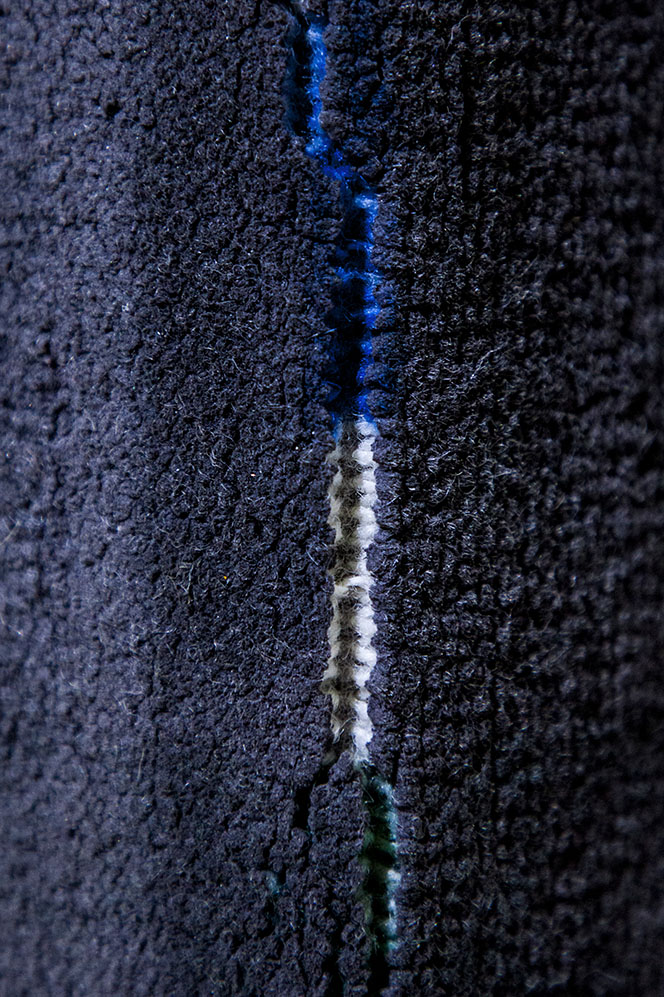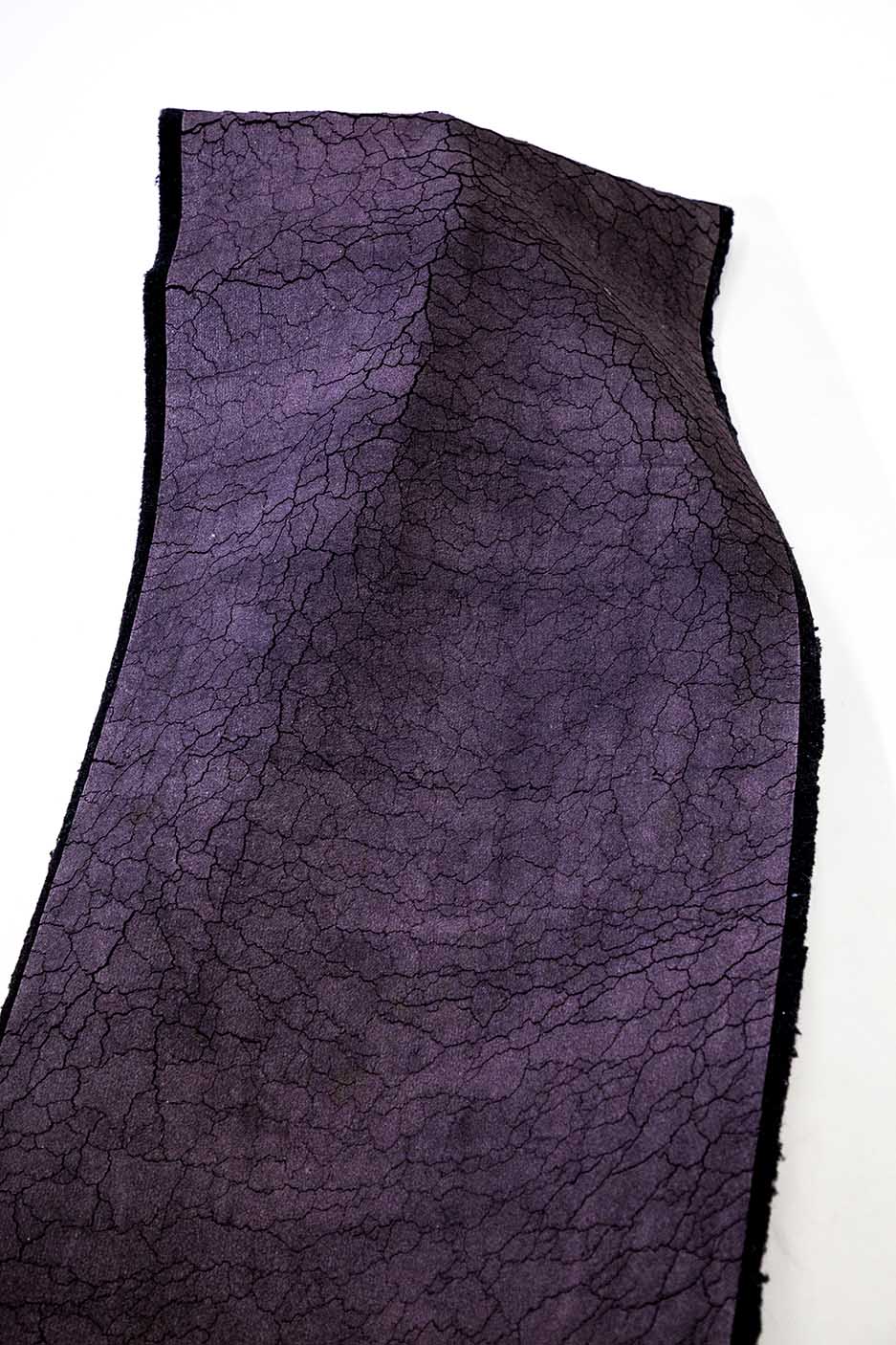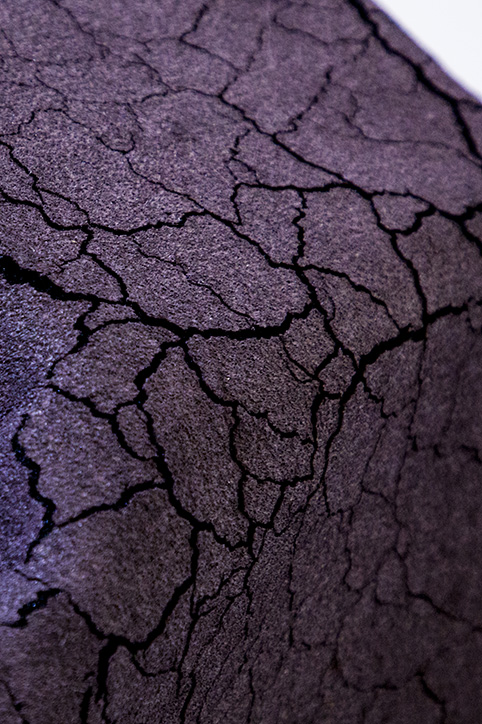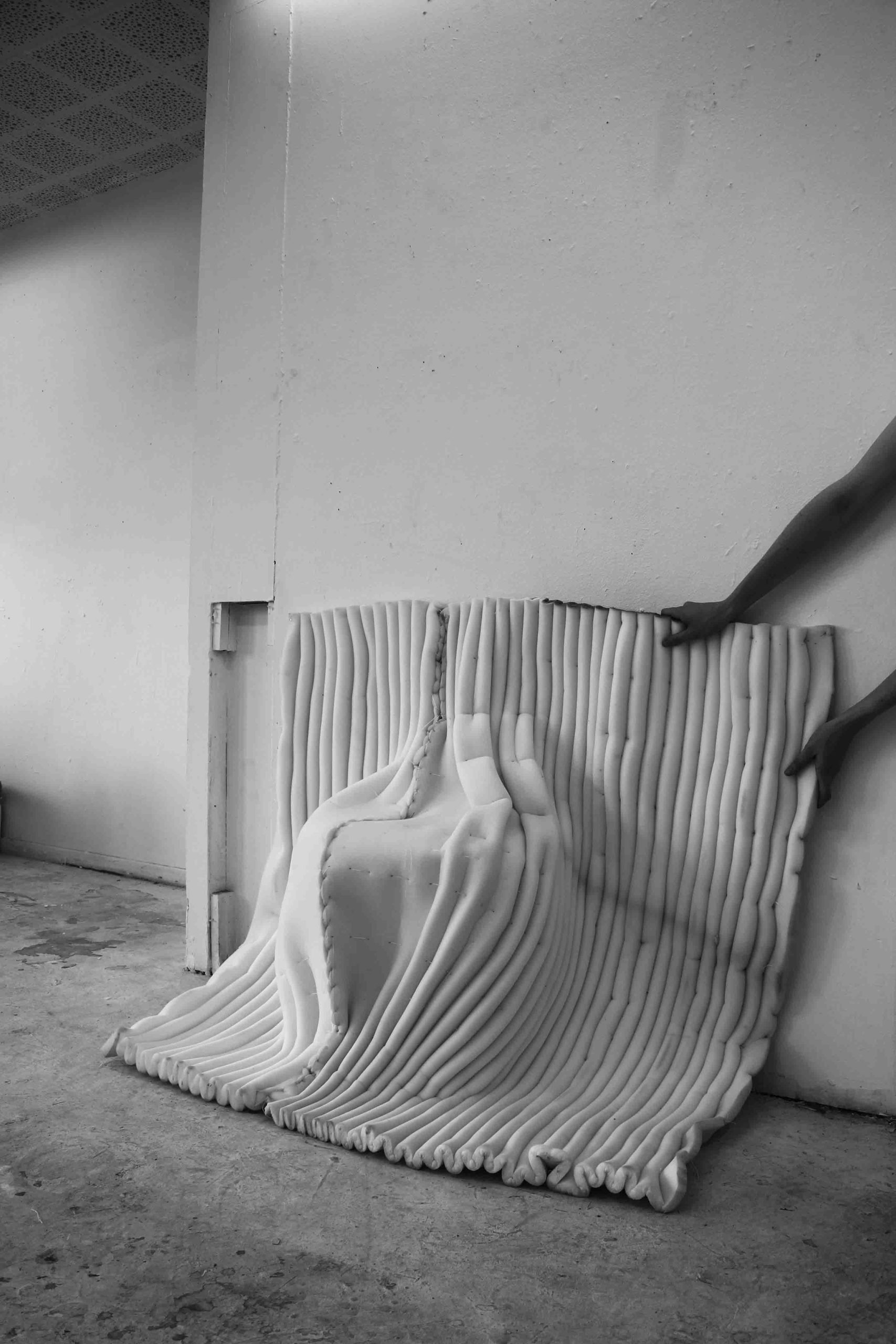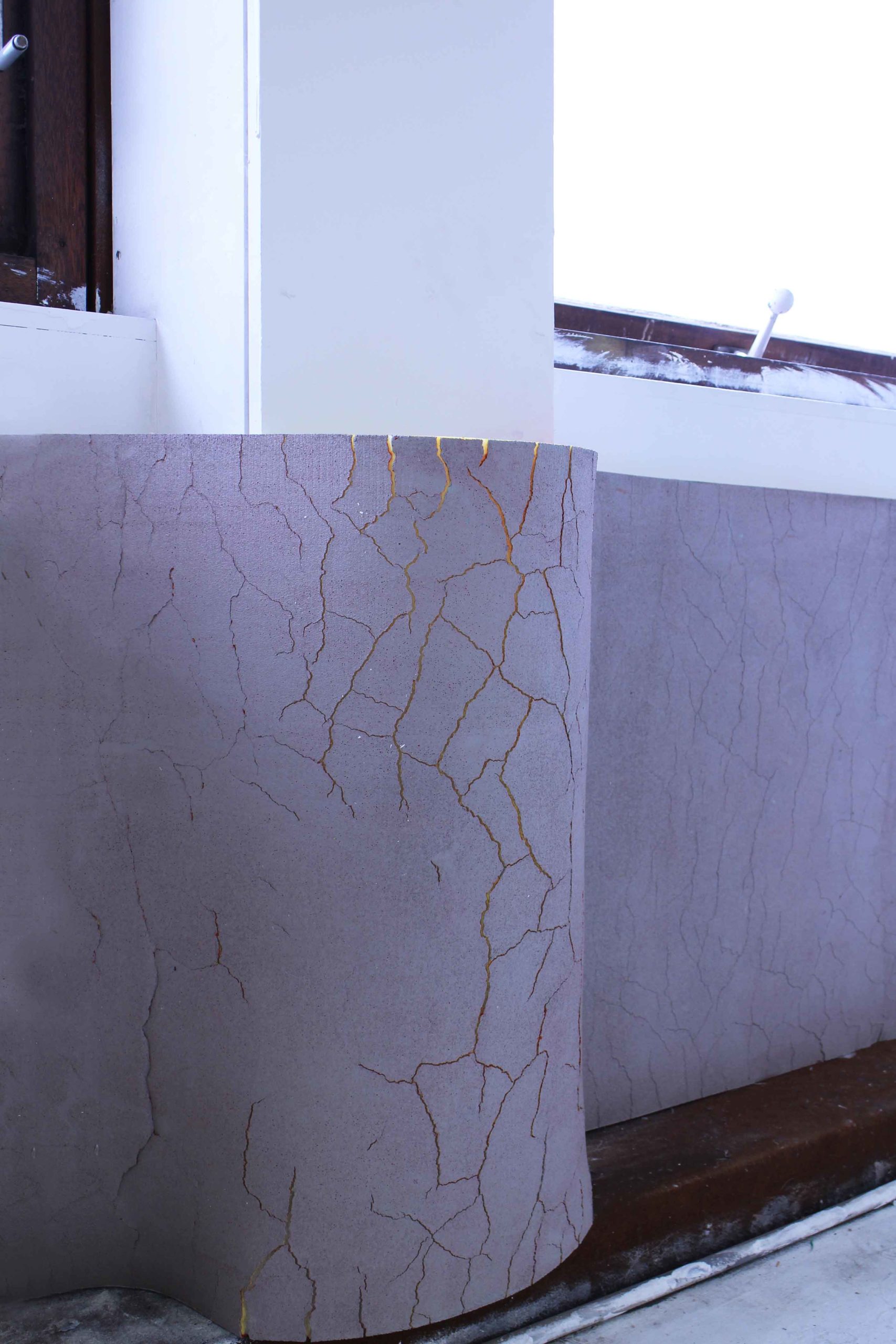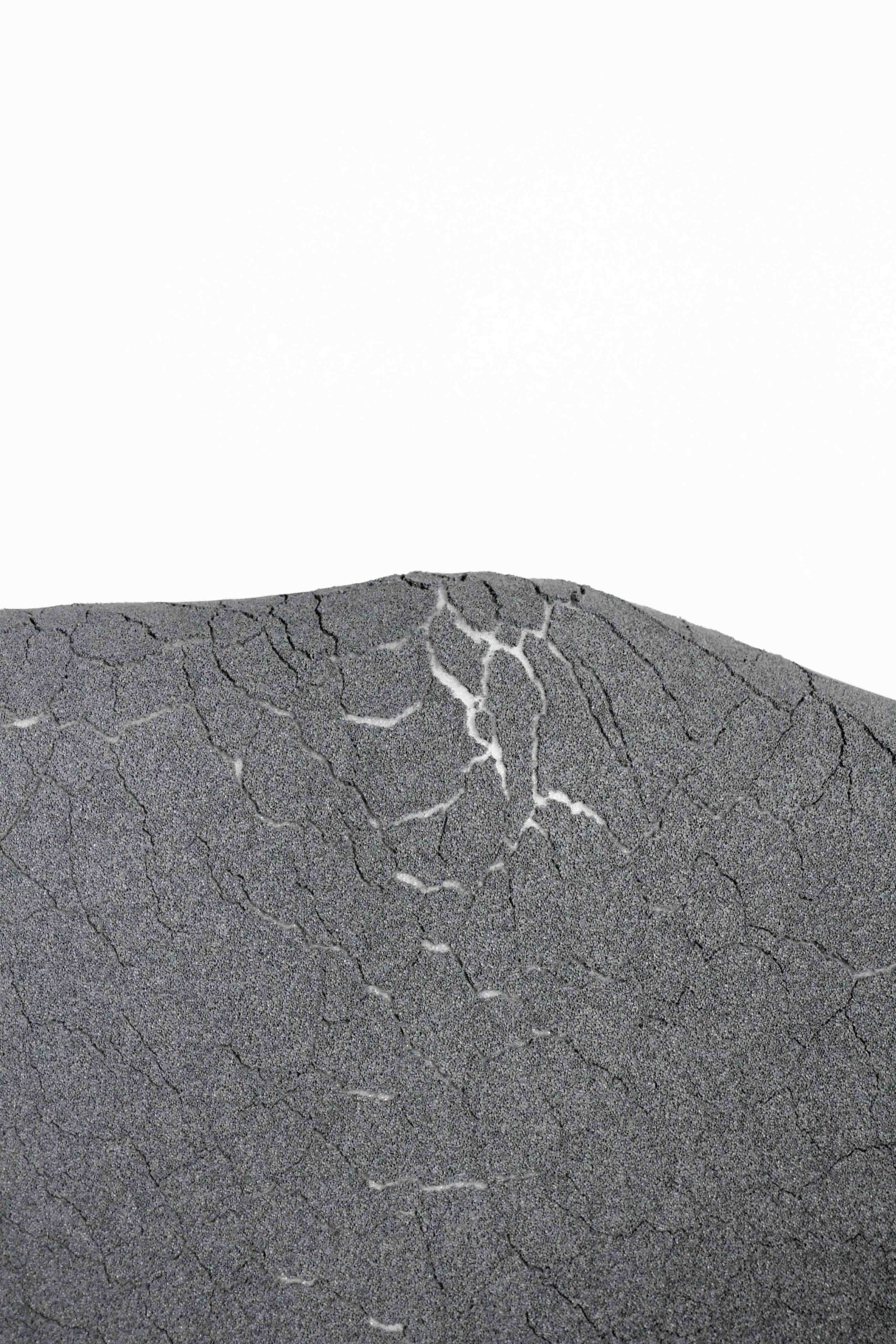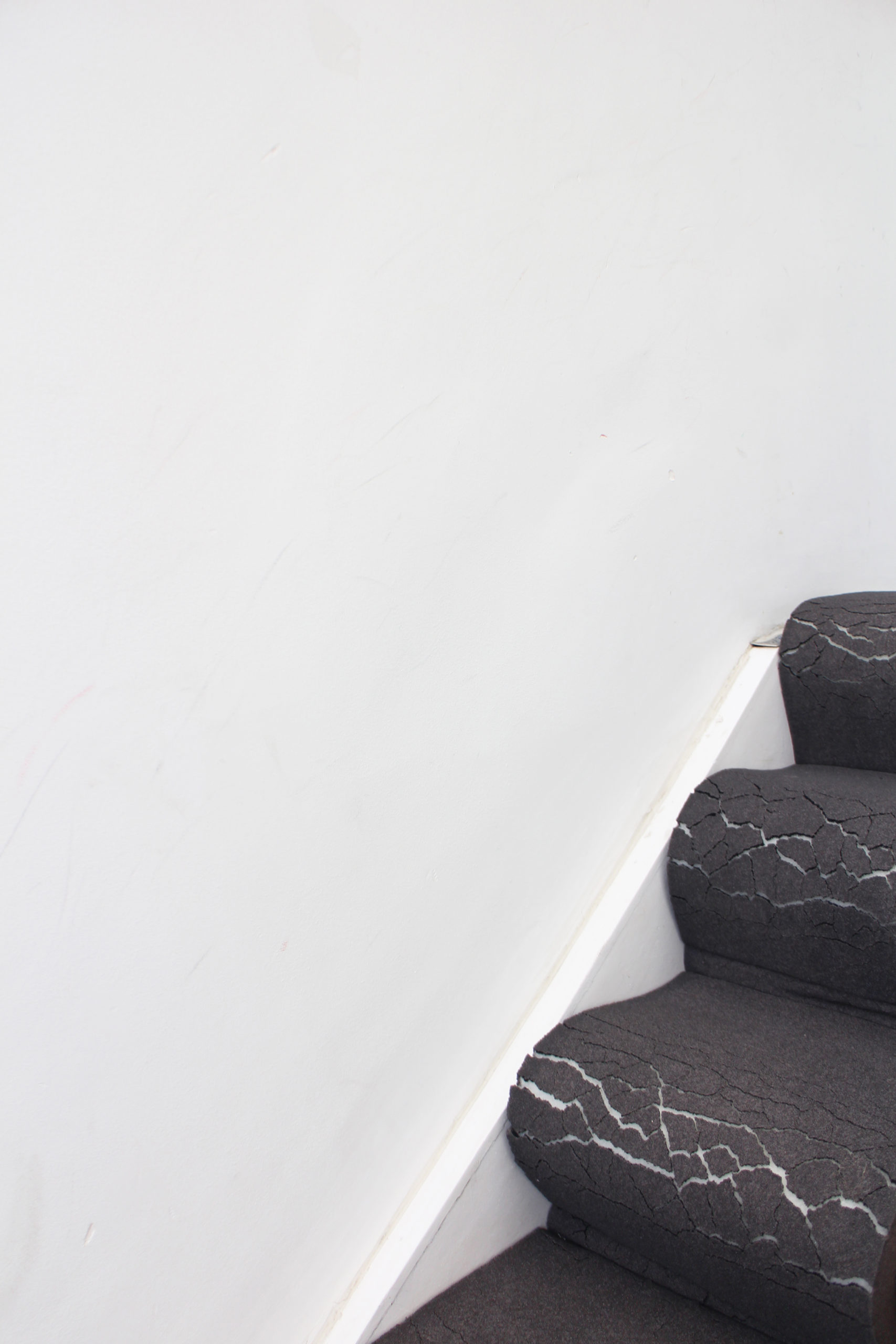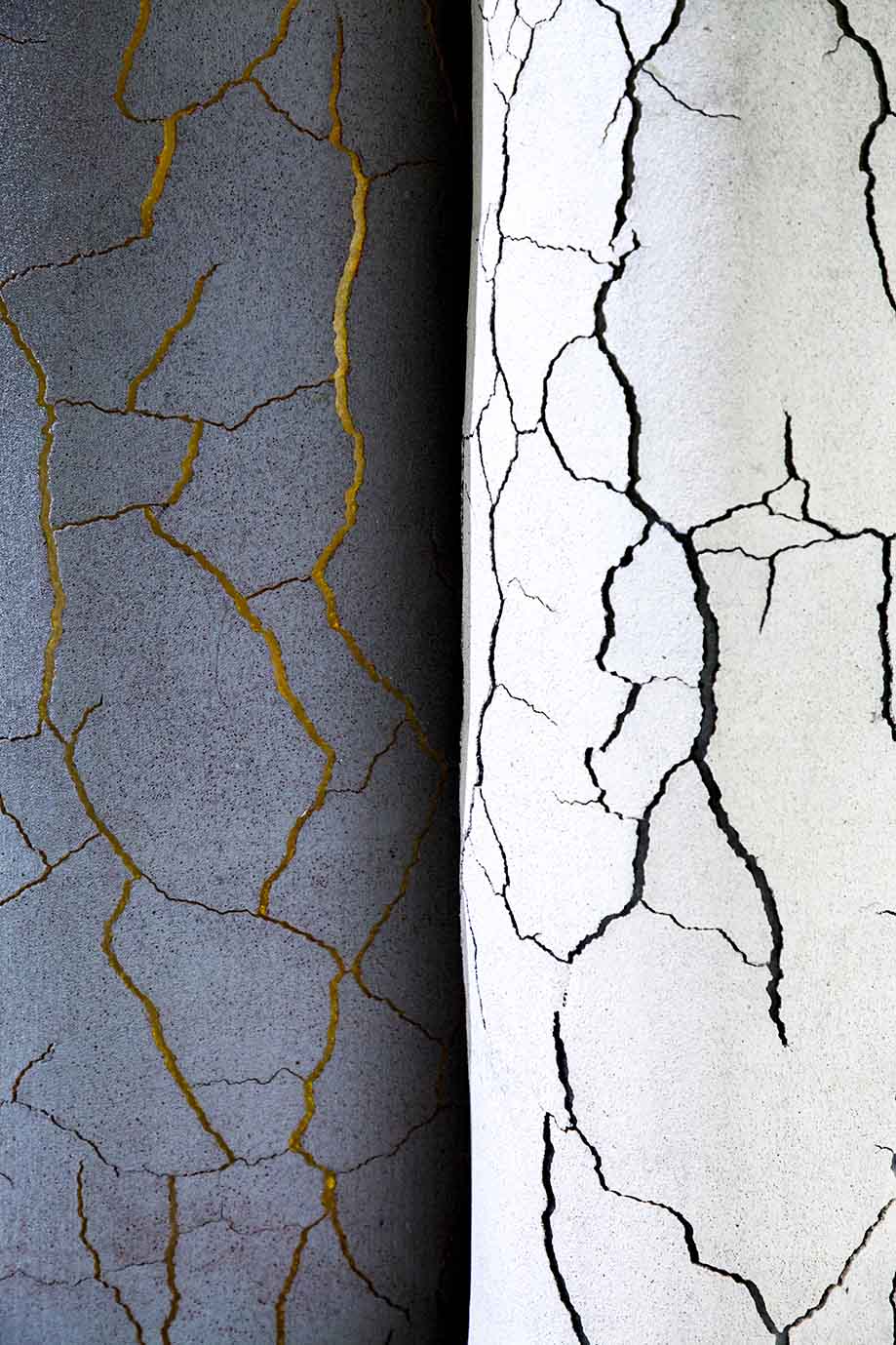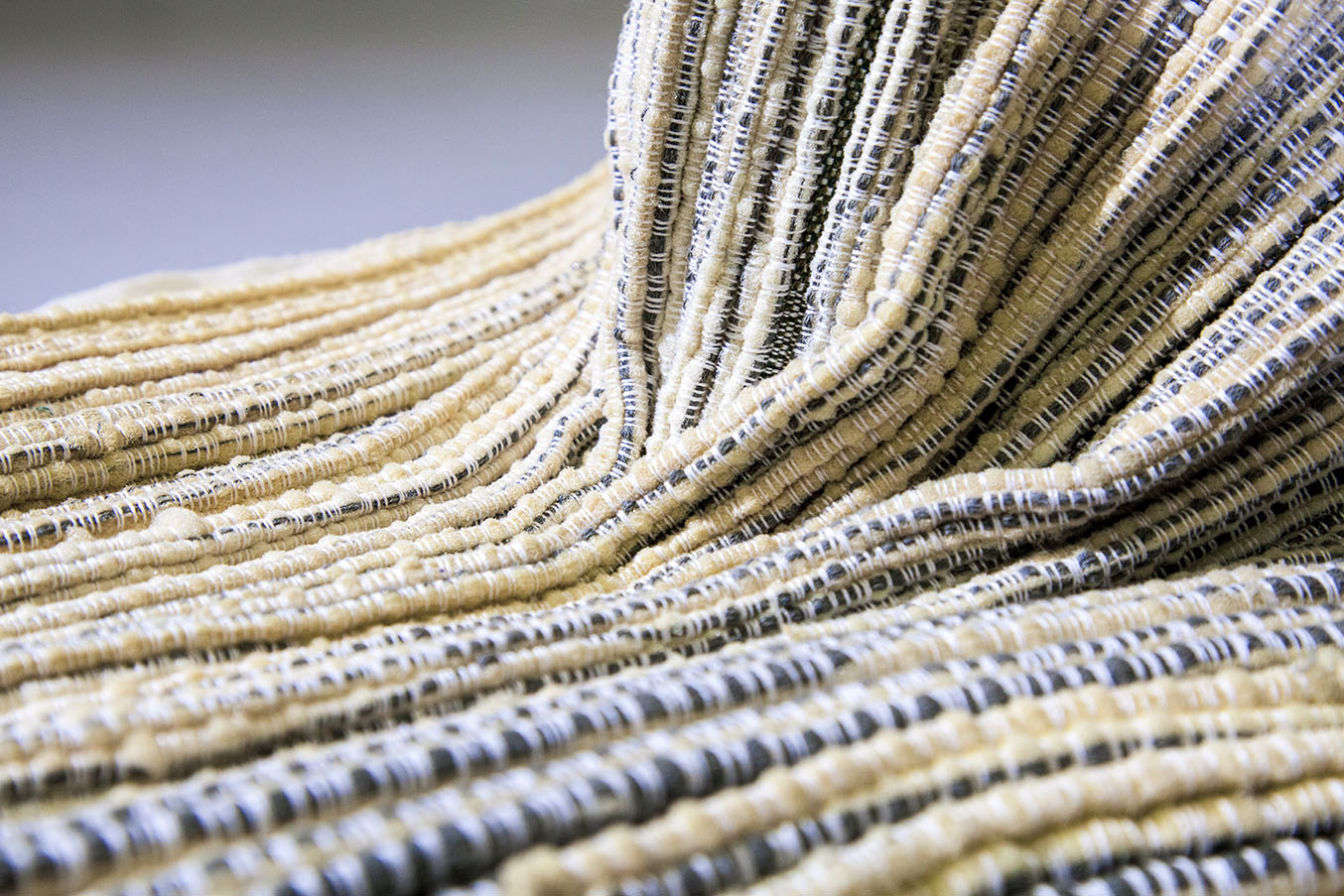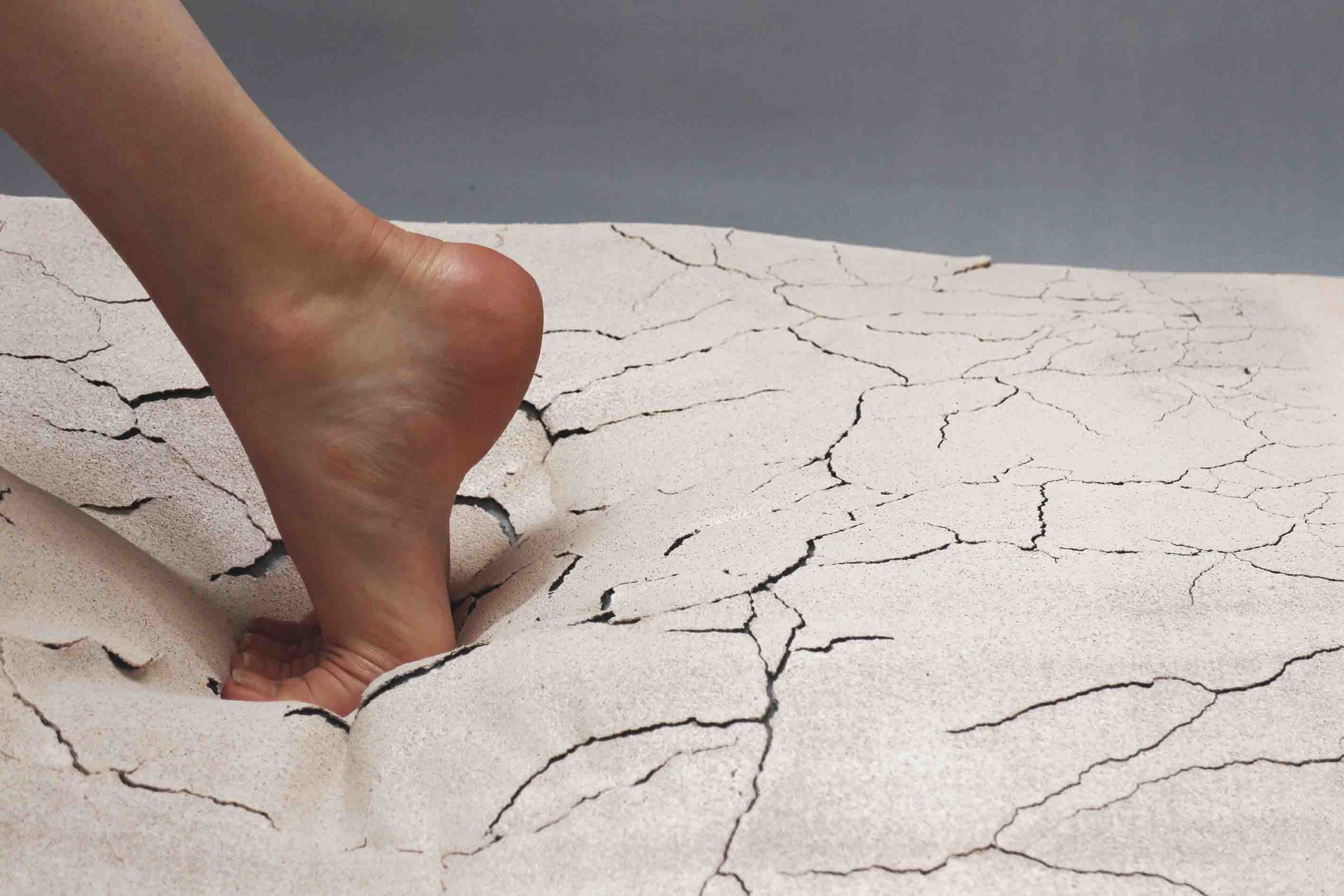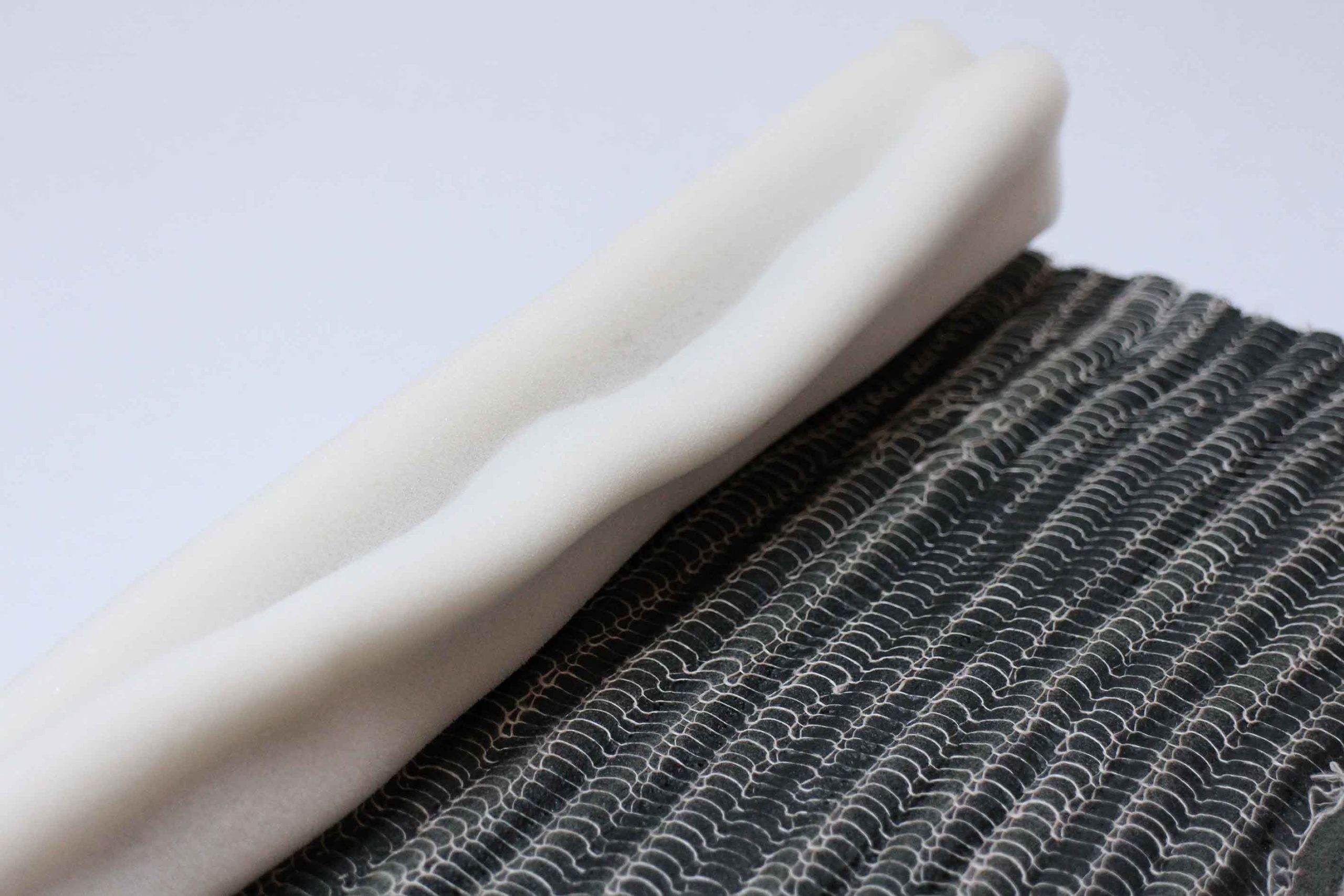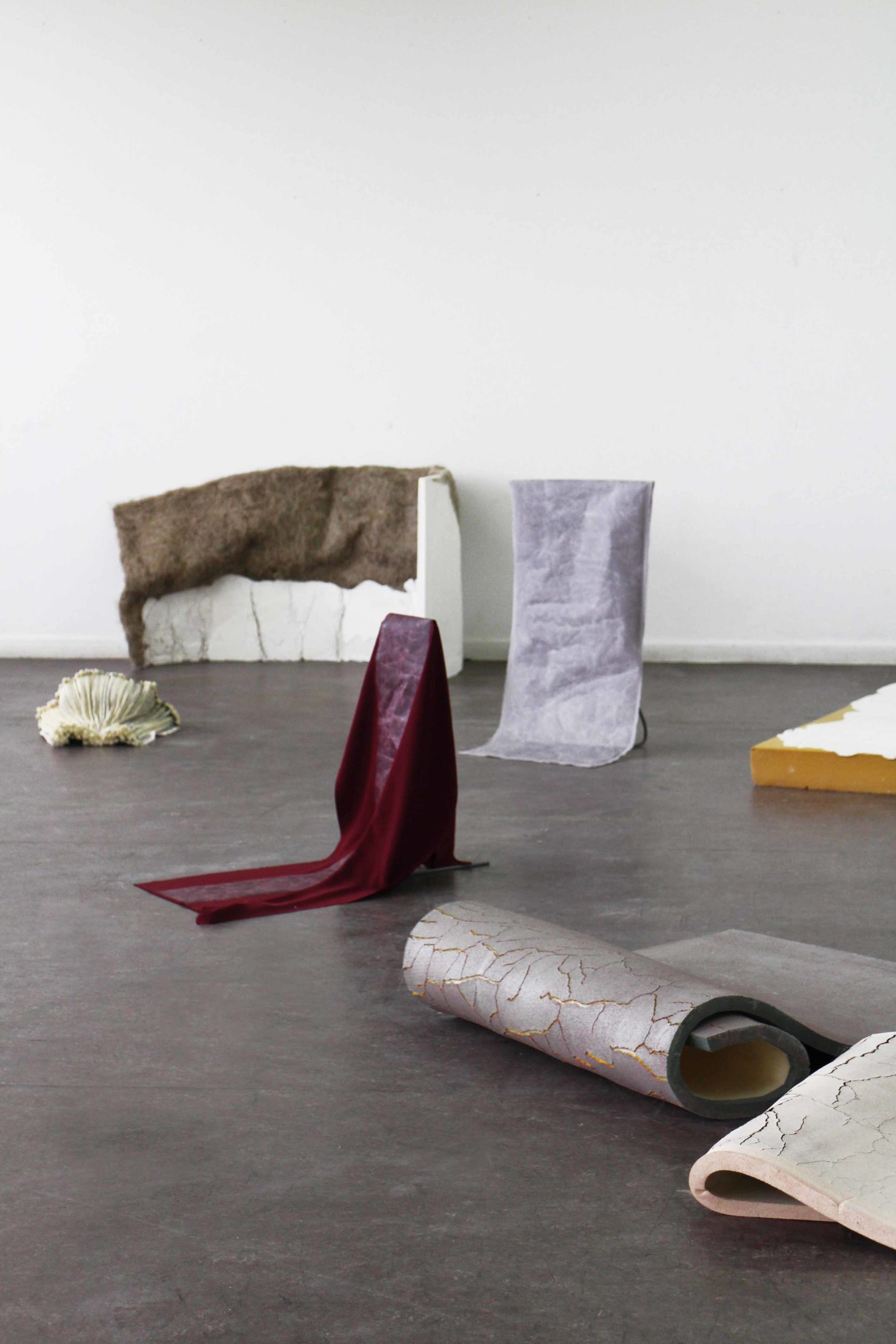TRANSMUTATION
2017 / La Cambre
Transmutation is the fact that a body changes substance, going from a "base nature" to a "noble nature". Transmutation offers a collection of materials in the order of wall or floor covering, the appearance of which changes with handling. The creation process is like an experimental and methodological laboratory. The designer uses recycled materials such as single-use event carpet, second-hand carpets and non-noble materials that are never seen, such as upholstery foam. At first, she deconstructs them, boning them, then she constrains them by coating them with various mediums and plaster, a poor material, of neutral color whose hardness comes to be associated with the flexibility of textiles. They then practice on surfaces of homogeneous appearance, tint and neutral color, incisions, cracks, microscopic and intangible flares as well as deployments not visible on the flat surface. It is only under the effect of manipulation by giving them their shape in space that alterations appear, a real visual surprise. Transmutation brings down derated materials, new singular coatings that resemble living organisms in motion and causes the user to have a visual, tactile and sensory journey.
Materials: Wool and synthetic carpet, foam surface, acrylic paint. Cotton and viscose fabrics, wool, synthetic threads. Sodium silicate, natural plaster, plastic coating for textiles. Techniques: Coating, weaving, machine mesh, pleating, mixed techniques. photo credit: Anjan
TRANSMUTATION
2017 / La Cambre
Transmutation is the fact that a body changes substance, going from a "base nature" to a "noble nature". Transmutation offers a collection of materials in the order of wall or floor covering, the appearance of which changes with handling. The creation process is like an experimental and methodological laboratory. The designer uses recycled materials such as single-use event carpet, second-hand carpets and non-noble materials that are never seen, such as upholstery foam. At first, she deconstructs them, boning them, then she constrains them by coating them with various mediums and plaster, a poor material, of neutral color whose hardness comes to be associated with the flexibility of textiles. They then practice on surfaces of homogeneous appearance, tint and neutral color, incisions, cracks, microscopic and intangible flares as well as deployments not visible on the flat surface. It is only under the effect of manipulation by giving them their shape in space that alterations appear, a real visual surprise. Transmutation brings down derated materials, new singular coatings that resemble living organisms in motion and causes the user to have a visual, tactile and sensory journey.
Materials: Wool and synthetic carpet, foam surface, acrylic paint. Cotton and viscose fabrics, wool, synthetic threads. Sodium silicate, natural plaster, plastic coating for textiles. Techniques: Coating, weaving, machine mesh, pleating, mixed techniques. photo credit: Anjan
TRANSMUTATION
2017 / La Cambre
Transmutation is the fact that a body changes substance, going from a "base nature" to a "noble nature". Transmutation offers a collection of materials in the order of wall or floor covering, the appearance of which changes with handling. The creation process is like an experimental and methodological laboratory. The designer uses recycled materials such as single-use event carpet, second-hand carpets and non-noble materials that are never seen, such as upholstery foam. At first, she deconstructs them, boning them, then she constrains them by coating them with various mediums and plaster, a poor material, of neutral color whose hardness comes to be associated with the flexibility of textiles. They then practice on surfaces of homogeneous appearance, tint and neutral color, incisions, cracks, microscopic and intangible flares as well as deployments not visible on the flat surface. It is only under the effect of manipulation by giving them their shape in space that alterations appear, a real visual surprise. Transmutation brings down derated materials, new singular coatings that resemble living organisms in motion and causes the user to have a visual, tactile and sensory journey.
Materials: Wool and synthetic carpet, foam surface, acrylic paint. Cotton and viscose fabrics, wool, synthetic threads. Sodium silicate, natural plaster, plastic coating for textiles. Techniques: Coating, weaving, machine mesh, pleating, mixed techniques. photo credit: Anjan
TRANSMUTATION
2017 / La Cambre
Transmutation is the fact that a body changes substance, going from a "base nature" to a "noble nature". Transmutation offers a collection of materials in the order of wall or floor covering, the appearance of which changes with handling. The creation process is like an experimental and methodological laboratory. The designer uses recycled materials such as single-use event carpet, second-hand carpets and non-noble materials that are never seen, such as upholstery foam. At first, she deconstructs them, boning them, then she constrains them by coating them with various mediums and plaster, a poor material, of neutral color whose hardness comes to be associated with the flexibility of textiles. They then practice on surfaces of homogeneous appearance, tint and neutral color, incisions, cracks, microscopic and intangible flares as well as deployments not visible on the flat surface. It is only under the effect of manipulation by giving them their shape in space that alterations appear, a real visual surprise. Transmutation brings down derated materials, new singular coatings that resemble living organisms in motion and causes the user to have a visual, tactile and sensory journey.
Materials: Wool and synthetic carpet, foam surface, acrylic paint. Cotton and viscose fabrics, wool, synthetic threads. Sodium silicate, natural plaster, plastic coating for textiles. Techniques: Coating, weaving, machine mesh, pleating, mixed techniques. photo credit: Anjan
TRANSMUTATION
2017 / La Cambre
Transmutation is the fact that a body changes substance, going from a "base nature" to a "noble nature". Transmutation offers a collection of materials in the order of wall or floor covering, the appearance of which changes with handling. The creation process is like an experimental and methodological laboratory. The designer uses recycled materials such as single-use event carpet, second-hand carpets and non-noble materials that are never seen, such as upholstery foam. At first, she deconstructs them, boning them, then she constrains them by coating them with various mediums and plaster, a poor material, of neutral color whose hardness comes to be associated with the flexibility of textiles. They then practice on surfaces of homogeneous appearance, tint and neutral color, incisions, cracks, microscopic and intangible flares as well as deployments not visible on the flat surface. It is only under the effect of manipulation by giving them their shape in space that alterations appear, a real visual surprise. Transmutation brings down derated materials, new singular coatings that resemble living organisms in motion and causes the user to have a visual, tactile and sensory journey.
Materials: Wool and synthetic carpet, foam surface, acrylic paint. Cotton and viscose fabrics, wool, synthetic threads. Sodium silicate, natural plaster, plastic coating for textiles. Techniques: Coating, weaving, machine mesh, pleating, mixed techniques. photo credit: Anjan

